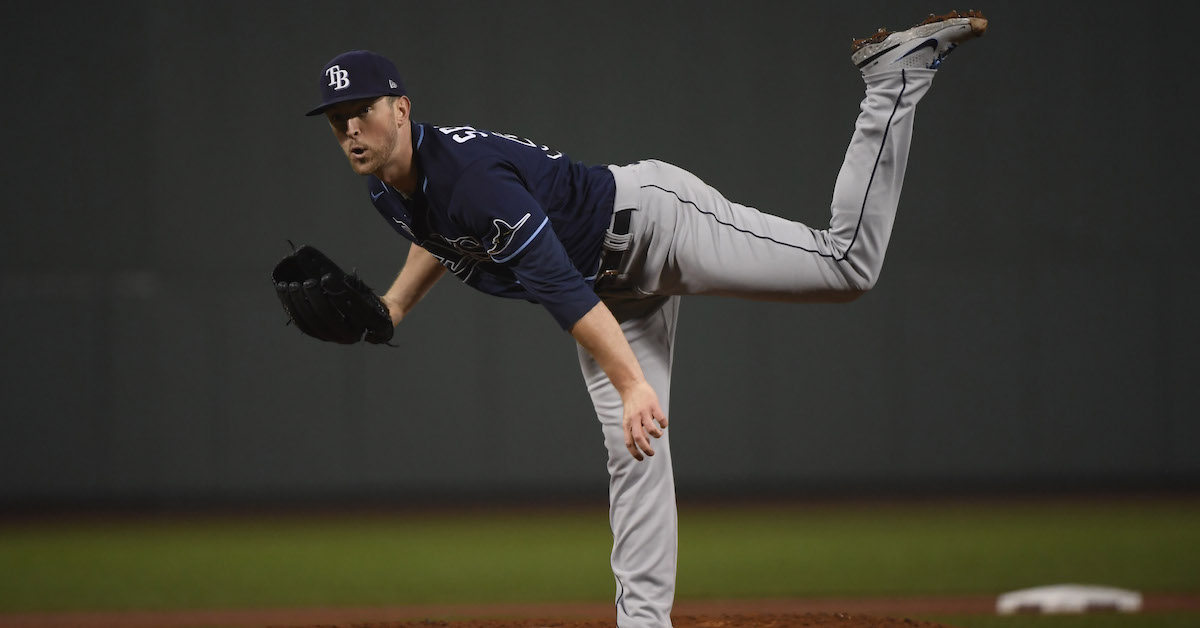Sliding Headfirst: Jaime Barría and the First-Pitch Slider

Since early in our history, FanGraphs has been tracking pitch type linear weights, or pitch values organized by pitch type, based on both Baseball Info Solutions and PITCHf/x pitch type data. While metrics like wRAA and wRC+ look at run generation through the outcomes of plate appearances, the idea behind pitch values is to take a more granular look. The outcome of each pitch changes the run expectancy of any plate appearance, and pitch value is a method for quantifying the overall impact of all of a player’s pitches, not just the pitches that end plate appearances, as most metrics do. In the form of pitch-type linear weights, we use these pitch values to evaluate the performance of pitchers’ specific pitch types — or hitters’ ability to hit them — either on an absolute basis with stats like wFB (runs above average on all fastballs) or on a per-pitch basis with stats like wFB/C (runs above average per 100 fastballs).
Pitch values can also be a useful way to evaluate how pitchers (or hitters, for that matter) have fared in specific counts. Executing pitches in particular situations to get ahead in counts is a crucial part of a pitcher’s approach, and at times, it feels like we narratively underestimate the impact that the outcome of an early-count pitch can have on the rest of a plate appearance. In 2022, firing a first-pitch strike was enough to drop an opposing hitters’ wRC+ from the normalized average of 100 to 68; missing on the first pitch gave hitters enough of an advantage to lead to a mark of 130, just about in line with recent years. That’s roughly the difference between Kyles Tucker and Isbel.
| Count | 0 Strikes | 1 Strike | 2 Strikes |
|---|---|---|---|
| 0 Balls | 100 | 68 | 22 |
| 1 Ball | 130 | 90 | 38 |
| 2 Balls | 179 | 130 | 68 |
| 3 Balls | 265 | 212 | 144 |
My colleague Ben Clemens has written on the strange historical practice of pitchers grooving fastballs right down the middle to start plate appearances and the perhaps even stranger practice of hitters letting them get away with that. But those practices are fading away, Ben writes, and in an analytical era in which teams are looking for every advantage, the first pitch is being recognized for what it is: a frontier of pitch value opportunity, a first chance to lower the expected scoring outcome of the plate appearance.
In 2022, the strongest performer overall on first pitches was none other than Angels reliever Jaime Barría, who finished with a summed run value of -10.1 on the opening offering, nearly two runs better than any other pitcher despite facing just 316 hitters. On a per-pitch basis, Barría’s performance was even more exceptional: his -.032 runs per first pitch were nearly twice that of any other pitcher with as many as 300 batters faced. It’s worth mentioning that there are limits to what we can glean from this data; around 300 pitches is a relatively modest sample size, and Piper Slowinski warns us that pitch value is more effective as a descriptive stat than a predictive one. Barría is a true outlier here, but as we indulge in taking a look at what was new in his approach, we should do so without assuming he’ll be able to reproduce these numbers in the future. Read the rest of this entry »









